Birds in Hesse are a vital part of the local ecosystem and provide a variety of benefits to the region.
From the many species of migratory birds that use Hesse as a stopover site to the birds of prey that call Hesse home, there are a wide variety of bird species in the area.
The diversity of bird life in Hesse is important for maintaining the health of the local environment, as birds help with pollination and pest control, as well as providing food sources for other wildlife.
The unique bird species in Hesse also bring a great deal of beauty and enjoyment to those who take the time to observe them.
1. Common Kestrel
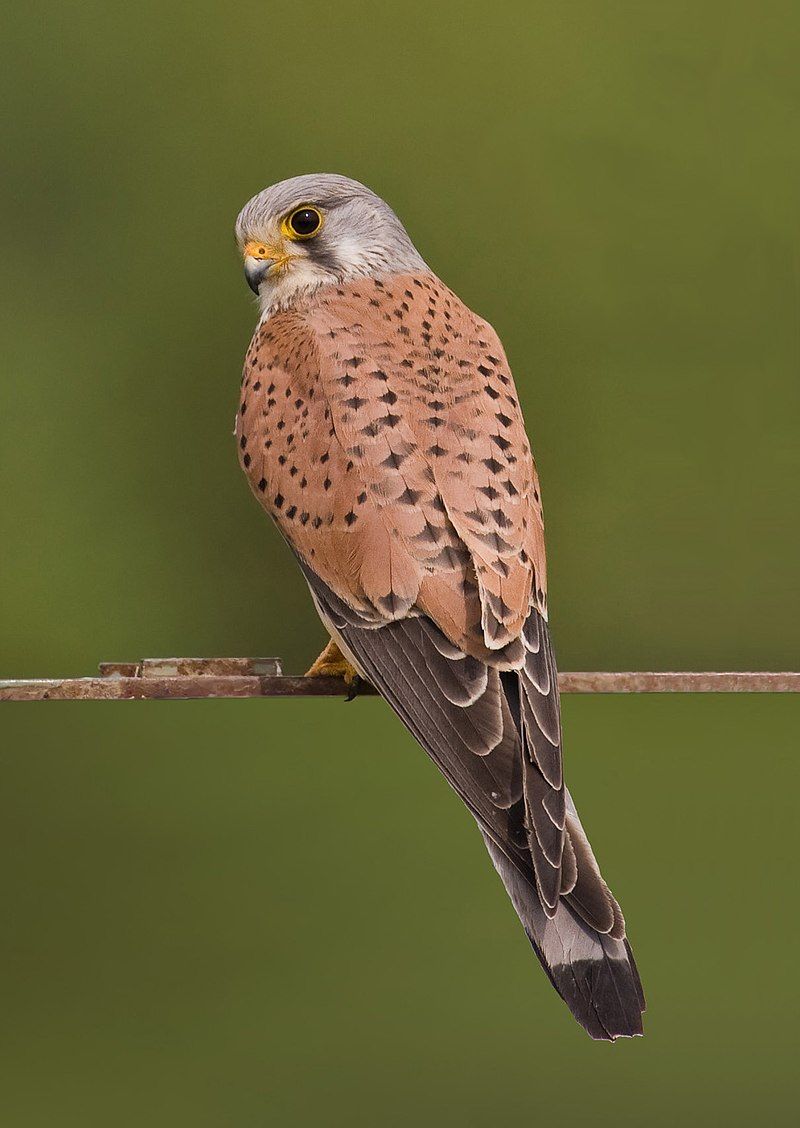
The common kestrel is a bird of prey, belonging to the falcon family Falconidae. It is known by many names, including the European kestrel, Eurasian kestrel, or Old World kestrel.
This species is the only kestrel found in the United Kingdom, so it is simply called “kestrel” there. The common kestrel is a medium-sized raptor, with males being slighter smaller than females. It has a brown back, grey head and tail, and a barred chest.
Its wingspan is typically between 39–47 cm (15–19 in). The call of the common kestrel is a shrill “ke-ke-ke-ke”.The common kestrel typically feeds on small rodents, birds, reptiles, and insects. It hunts by hovering in the air and using its keen eyesight to spot prey below.
It can also hunt on the ground. The common kestrel nests in cavities, usually in trees, cliffs, or buildings. It lays between four and six eggs and incubates them for about 28–30 days.
Both parents help to feed the chicks until they are ready to fly. The common kestrel is widespread and is found in temperate habitats throughout much of the world. It is a fairly common species, and its numbers have remained stable in recent years.
| Kingdom | Animalia |
| Phylum | Chordata |
| Class | Aves |
| Order | Falconiformes |
| Family | Falconidae |
| Genus | Falco |
| Species | F. tinnunculus |
2. Mallard
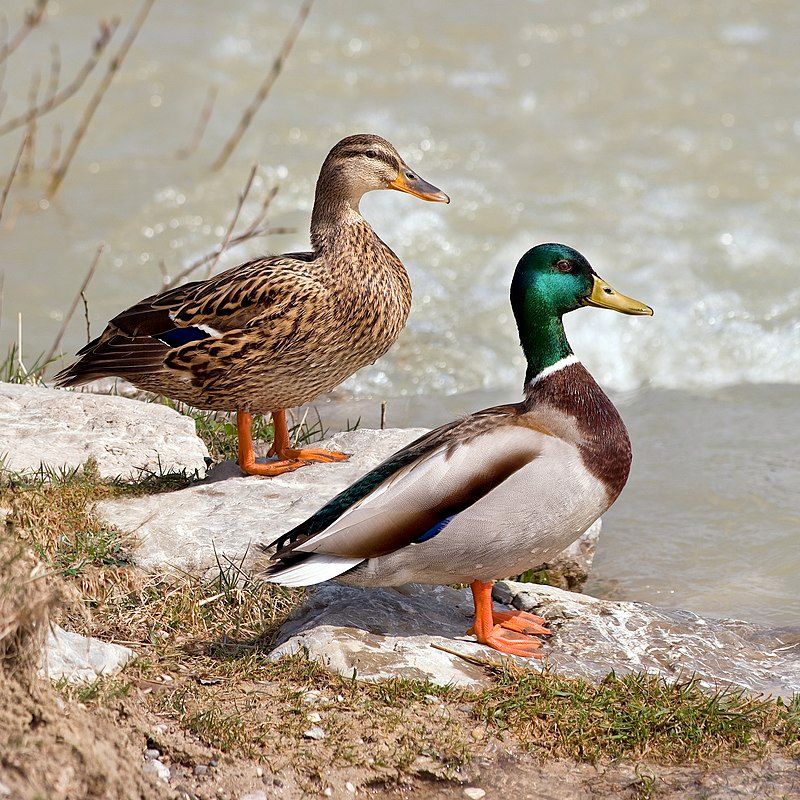
The mallard, or wild duck, is a species of dabbling duck that is widely distributed across much of the world. It can be found in temperate and subtropical regions in the Americas, Eurasia, and North Africa.
This species has also been introduced to other regions outside of its natural range, such as New Zealand, Australia, Peru, Brazil, Uruguay, Argentina, Chile, Colombia, the Falkland Islands, and South Africa. The mallard is a highly adaptable species and can be found in a variety of habitats, such as wetland areas, ponds, lakes, rivers, and even urban areas.
It has a wide diet, including vegetation, small aquatic creatures, and even some human-provided food. The male mallard is easily identifiable, due to its bright green and yellow plumage.
The female is more plain in comparison, typically having a brownish coloration. The species is considered to be abundant throughout its range and is not considered to be threatened. It is also a popular game bird and is hunted for sport in many parts of the world.
The mallard is also a popular choice for domestication, as it can be easily tamed and kept as a pet.
| Kingdom | Animalia |
| Phylum | Chordata |
| Class | Aves |
| Order | Anseriformes |
| Family | Anatidae |
| Genus | Anas |
| Species | A. platyrhynchos |
3. Greylag Goose
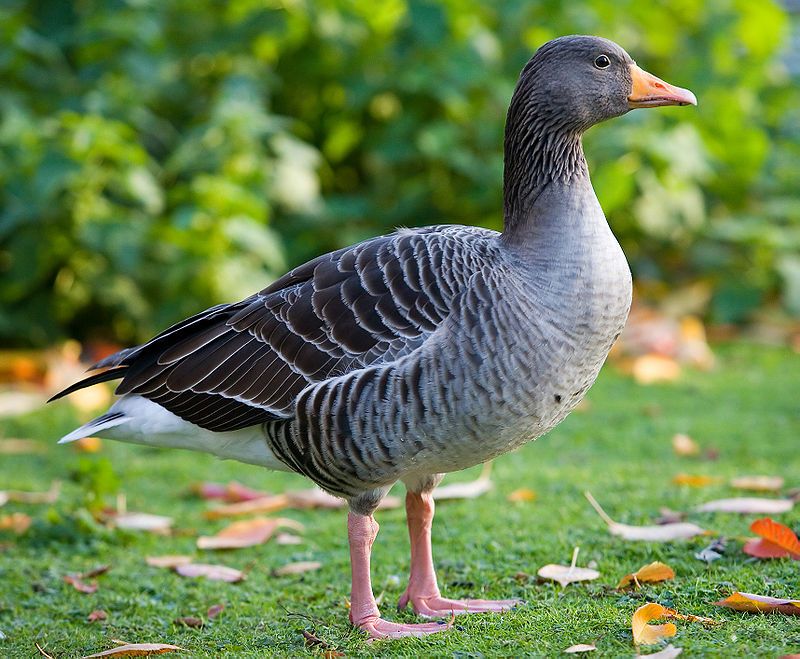
The Greylag Goose, also known as the Graylag Goose, is a member of the Anatidae family. It is the type species of the genus Anser and is known for its large size. It has a mottled and barred gray and white plumage, along with an orange beak and pink legs.
This species of goose is found in many parts of the world and is a common sight in wetlands, fields, and other areas with plenty of water and food sources. Its diet consists of grains, aquatic vegetation, small invertebrates, and berries.
Greylag geese often migrate long distances and can be seen in large groups. They are known to form strong family bonds and are often seen with their young in family groups.
The Greylag Goose is an important part of many ecosystems and is an important food source for many species of animals.
| Kingdom | Animalia |
| Phylum | Chordata |
| Class | Aves |
| Order | Anseriformes |
| Family | Anatidae |
| Genus | Anser |
| Species | A. anser |
4. Little Grebe
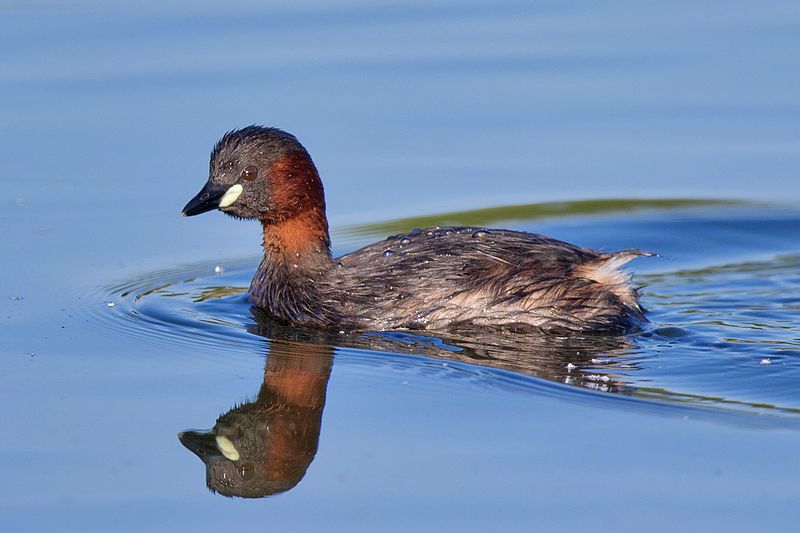
The little grebe, or dabchick, is a type of water bird in the grebe family. The genus name for this species comes from the Ancient Greek words “takhus” and “bapto” which mean “fast” and “to sink under”, respectively.
The specific name of this bird, ruficollis, is derived from two Latin words: “rufus” which means “red” and “-collis” which means “necked”. This latter word is derived from the Latin word “collum” which means “neck”. Thus, the name “ruficollis” can be translated as “red-necked”.
This is an apt name for the little grebe since it has a reddish-brown neck.
| Kingdom | Animalia |
| Phylum | Chordata |
| Class | Aves |
| Order | Podicipediformes |
| Family | Podicipedidae |
| Genus | Tachybaptus |
| Species | T. ruficollis |
5. Eurasian Collared Dove
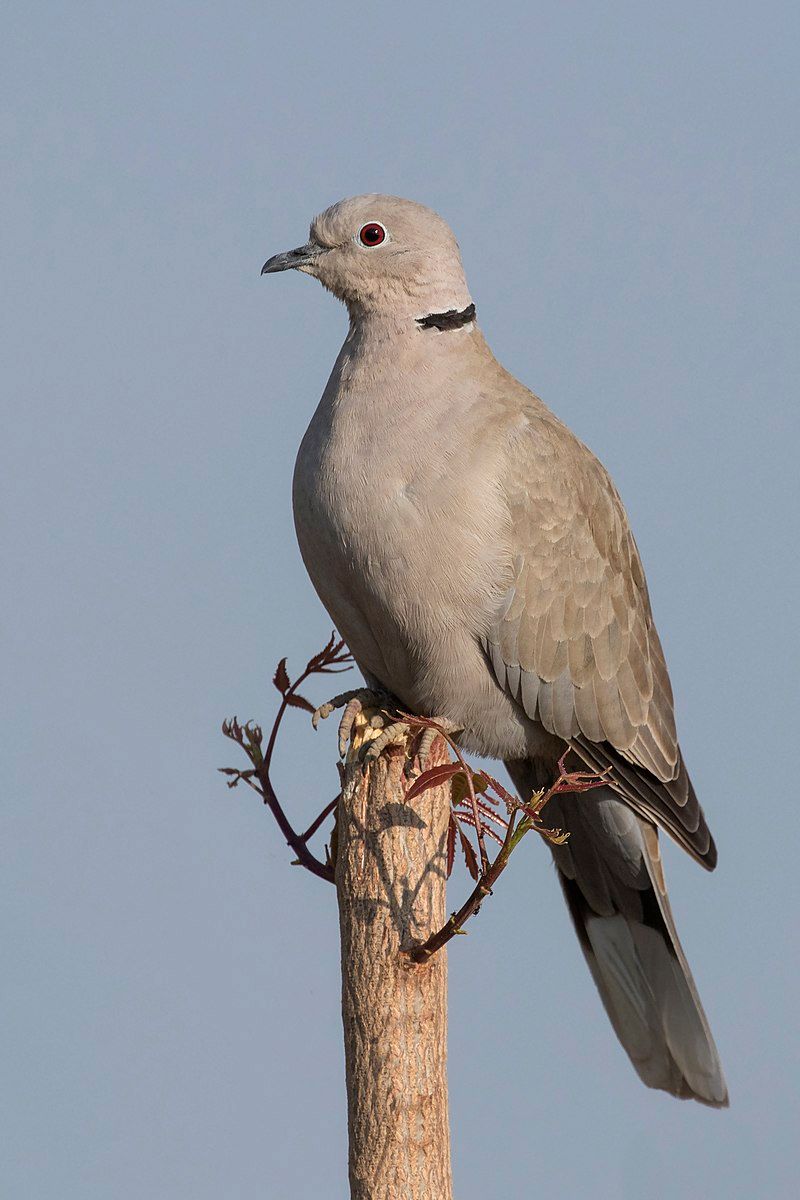
The Eurasian collared dove is a species of dove that is native to Europe and Asia. It has a very large range, allowing it to be introduced to many other places such as Japan, North America, and islands in the Caribbean.
This species of dove has had a growing population trend, which has resulted in it being listed as Least Concern on the IUCN Red List since 2014. This means that it is considered to have a stable population and is not facing any immediate threat of extinction.
Although its population is not currently declining, its range is still limited, and it is susceptible to habitat loss and other threats. It is important to protect this species in order to maintain the stability of its population.
| Kingdom | Animalia |
| Phylum | Chordata |
| Class | Aves |
| Order | Columbiformes |
| Family | Columbidae |
| Genus | Streptopelia |
| Species | S. decaocto |
6. Canada Goose
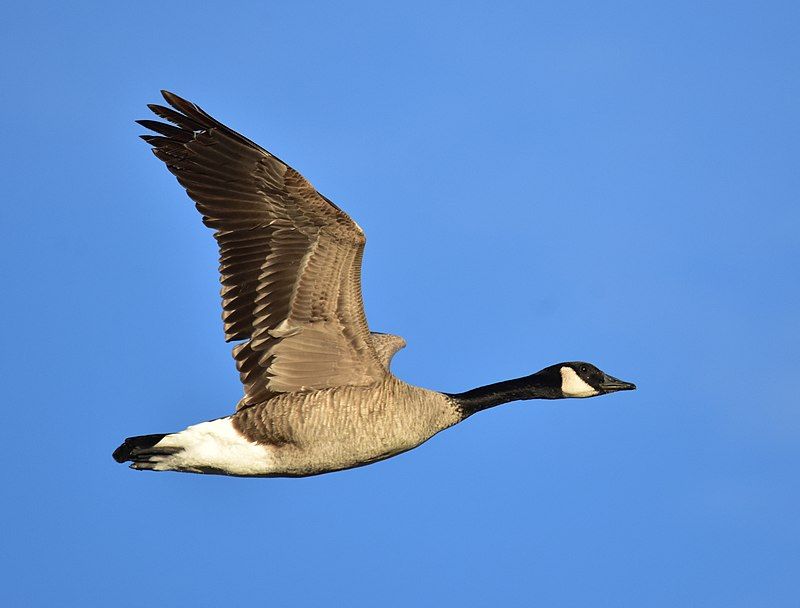
The Canada goose is a large wild goose that is native to the arctic and temperate regions of North America. It is easily identifiable by its black head and neck, white cheeks, white under its chin, and brown body.
This species of goose is often seen during migration, crossing the Atlantic to northern Europe. The Canada goose is an important species in North America as it serves as an indicator of environmental health.
Its presence, or lack thereof, in a given area can be a sign of the area’s ecological health. The species is also important to many cultures, as it has been hunted for centuries as a food source.
Additionally, its feathers have been used in traditional clothing and crafts. The Canada goose is also an important species to observe and study.
Its life cycle, behavior, and habitat preferences can provide insight into its environment and the health of the ecosystem it inhabits. It is also an important species in terms of birdwatching and other recreational activities.
The Canada goose is an iconic species that is widely recognized and appreciated. Its importance to both the environment and to the humans who inhabit the same areas makes it an important species to protect and preserve.
| Kingdom | Animalia |
| Phylum | Chordata |
| Class | Aves |
| Order | Anseriformes |
| Family | Anatidae |
| Genus | Branta |
| Species | B. canadensis |
7. Egyptian Goose
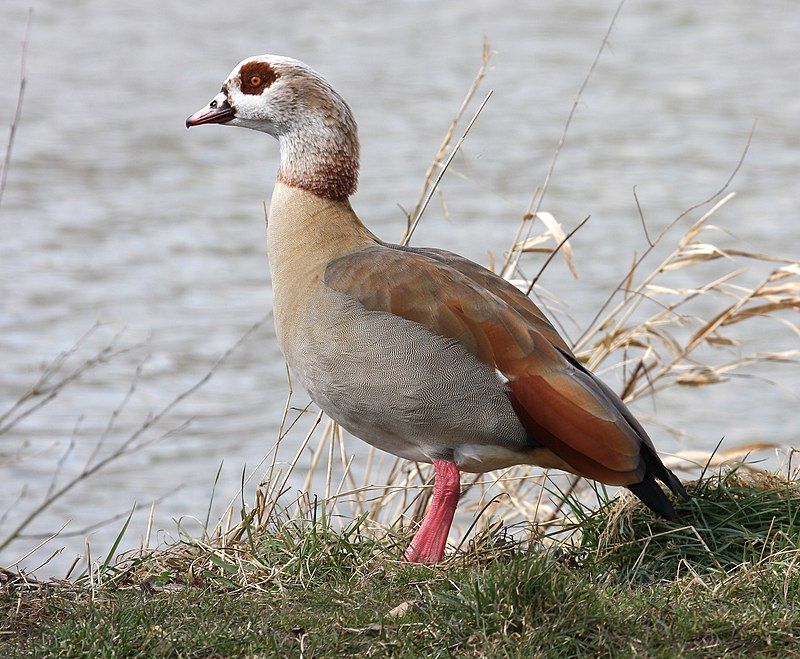
The Egyptian goose is a species of waterfowl native to Africa, which belongs to the Anatidae family, which includes ducks, geese, and swans.
This species is highly popular among bird enthusiasts and has been introduced to areas outside of its natural range, including Europe, the United States, and beyond.
The introduction of this species is largely attributed to its beautiful appearance; it has grey-brown feathers with a white neck and head and a pinkish-brown bill.
The Egyptian goose is also notable for its large and striking eyes and its long legs. In its native range, the Egyptian goose can be found in wetlands, lakes, rivers, and other areas with plentiful water.
They are known to feed on aquatic vegetation, insects, and small animals, and they nest in the hollows of trees and bushes.
They are social birds, often found in groups of up to ten individuals. The Egyptian goose has been introduced to many regions outside of its native range and has become naturalized in some of these regions.
While the species is not considered to be invasive, its introduction can disrupt the local ecology, and it can compete with local species for food and nesting sites. As a result, it is important to consider the potential impacts of introducing this species to new areas.
| Kingdom | Animalia |
| Phylum | Chordata |
| Class | Aves |
| Order | Anseriformes |
| Family | Anatidae |
| Genus | Alopochen |
| Species | A. aegyptiaca |
8. Great Crested Grebe
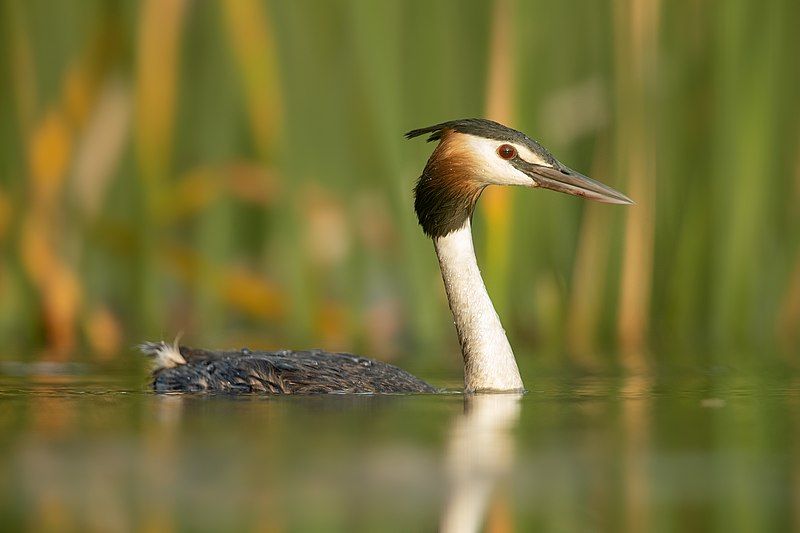
The great crested grebe is an impressive water bird belonging to the grebe family of birds. It is easily distinguishable by its long neck and dark, pointed head. It has a reddish-brown back and chest with white cheeks and a black line running down the center of its neck.
It is found in freshwater lakes and ponds throughout Europe, Asia, and North America. The great crested grebe is notable for its elaborate mating display, which includes head-shaking and body-shaking, bobbing, and swimming in circles as part of its courtship ritual.
The male will also bring gifts of vegetation and twigs for the female to create a nest. After mating, they will remain together to raise their chicks. The great crested grebe is an excellent swimmer and diver, and it feeds mainly on fish, frogs, and aquatic insects.
It will also occasionally consume small mammals and birds. Its diet is supplemented by vegetation and aquatic plants. The great crested grebe is a non-migratory species, but it will move to different bodies of water to breed.
Its population is declining due to loss of wetland habitats, pollution and human disturbance. In order to protect the species, conservation efforts must be made to protect its habitats and ensure its future survival.
| Kingdom | Animalia |
| Phylum | Chordata |
| Class | Aves |
| Order | Podicipediformes |
| Family | Podicipedidae |
| Genus | Podiceps |
| Species | P. cristatus |
9. Common Goldeneye
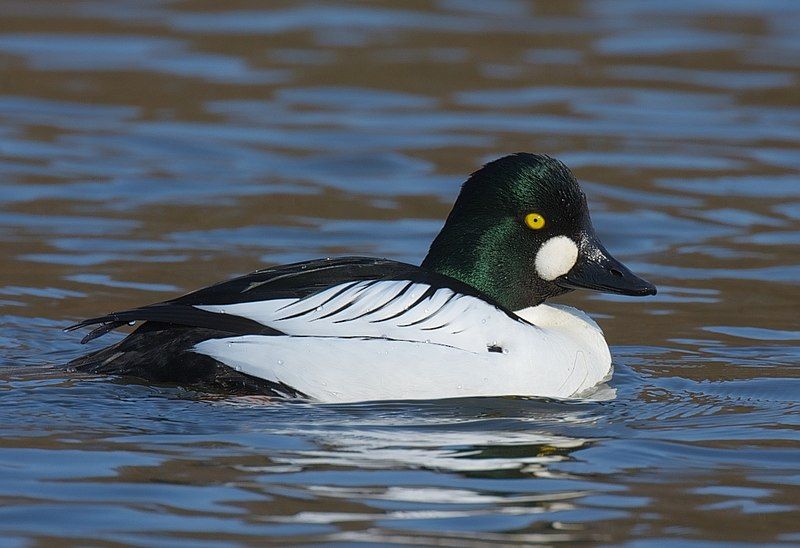
The common goldeneye is a medium-sized sea duck that belongs to the genus Bucephala, which is commonly referred to as the goldeneyes. The closest relative of the common goldeneye is the Barrow’s goldeneye, another species of sea duck that is very similar in appearance.
The name of the genus, Bucephala, comes from the Ancient Greek word “boukephalos”, which is a reference to the round shape of the bufflehead, another type of sea duck.
The common goldeneye is a popular bird, as it can be found in the northern parts of Europe, Asia, and North America. It is a fairly large bird, with an average wingspan of around 50 cm.
It has a distinctive black-and-white colouring, with a bright yellow-gold eye that gives the bird its name. The common goldeneye is an omnivore, meaning that it feeds on both plants and animals.
It typically eats small fish, aquatic insects, crustaceans, and occasionally small mammals. During the breeding season, the common goldeneye typically builds its nest near water, where it can lay up to a dozen eggs.
The eggs are incubated by both parents, and the ducklings are able to fly within a few weeks of hatching. The common goldeneye is an important part of many ecosystems, as well as being an iconic bird species.
| Kingdom | Animalia |
| Phylum | Chordata |
| Class | Aves |
| Order | Anseriformes |
| Family | Anatidae |
| Genus | Bucephala |
| Species | B. clangula |
10. Common Pochard
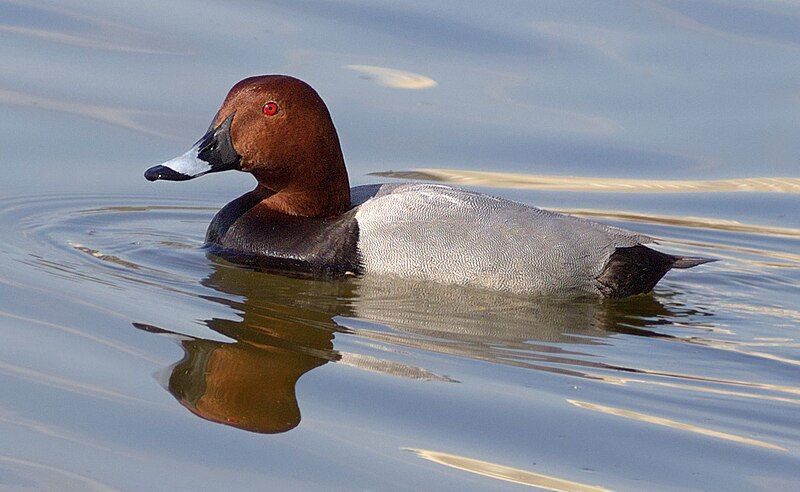
The common pochard is a species of medium-sized diving duck found all around the world.
Its scientific name is derived from two sources, the Greek word “aithuia”, which is an unidentified seabird mentioned in ancient texts by authors such as Hesychius and Aristotle, and the Latin word “ferina”, which translates to “wild game” and is derived from the Latin word “ferus” which means wild.
This combination of words is used to describe the common pochard, which is a wild species of diving duck. The common pochard is a versatile bird and can be found in a variety of habitats, including ponds, lakes, rivers, marshes, and coastal areas.
It is a strong swimmer and dives underwater to search for its food, which consists of aquatic plants, insects, shells, and mollusks. The common pochard is also known to consume small fish.
The common pochard is an important species of waterfowl and is hunted for sport and food in many parts of the world. It is also used in conservation programs to help maintain waterfowl populations and prevent over-hunting of other species.
In addition, the common pochard helps to keep ecosystems healthy by eating aquatic plants and insects that could otherwise become pests.
Overall, the common pochard is an important species of waterfowl that is both a popular game bird and a major part of many ecosystems around the world.
Its scientific name, derived from the Greek and Latin languages, is a testament to its wild nature and importance in the environment.
| Kingdom | Animalia |
| Phylum | Chordata |
| Class | Aves |
| Order | Anseriformes |
| Family | Anatidae |
| Genus | Aythya |
| Species | A. ferina |
11. Mute Swan
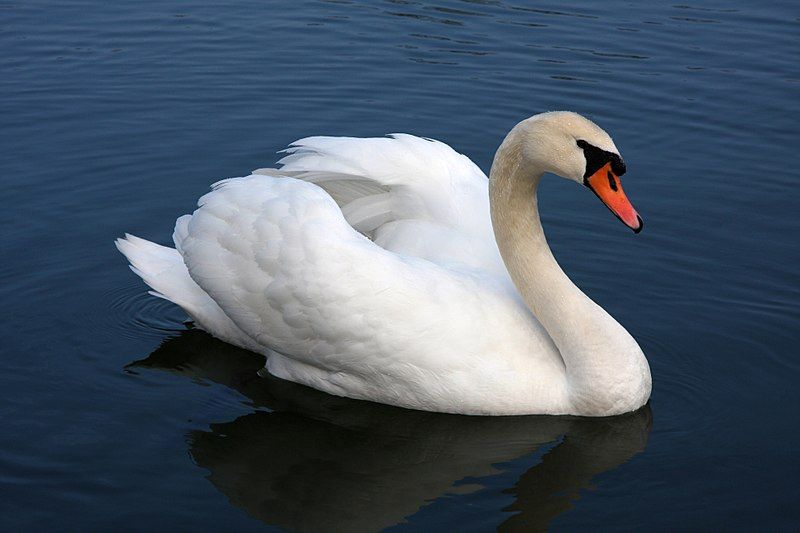
The mute swan is a species of swan and a member of the waterfowl family Anatidae. It is a large bird, usually found in areas with access to water. It is native to much of Eurosiberia and the far north of Africa, as it prefers a temperate climate.
It is usually found around wetlands, lakes, and rivers, as well as in parks and gardens. Its white feathers contrast with its black, beak-like bill, and its long neck gives it an elegant look.
With its wings outspread, the mute swan can reach a wingspan of up to 2.1 meters, making it one of the largest waterfowl species. It feeds mainly on aquatic vegetation, but it can also eat small insects and molluscs.
During the breeding season, males will often display their wings and make loud honking noises to attract a mate. The female will then build a nest and lay 4 to 8 eggs, which the parents will take turns incubating until they hatch after about 35 days.
The young cygnets will stay with their parents for up to two years, gradually learning to forage on their own. The mute swan is an iconic species and an important part of many ecosystems, so it is important that its habitat is preserved.
| Kingdom | Animalia |
| Phylum | Chordata |
| Class | Aves |
| Order | Anseriformes |
| Family | Anatidae |
| Genus | Cygnus |
| Species | C. olor |
12. Tufted Duck
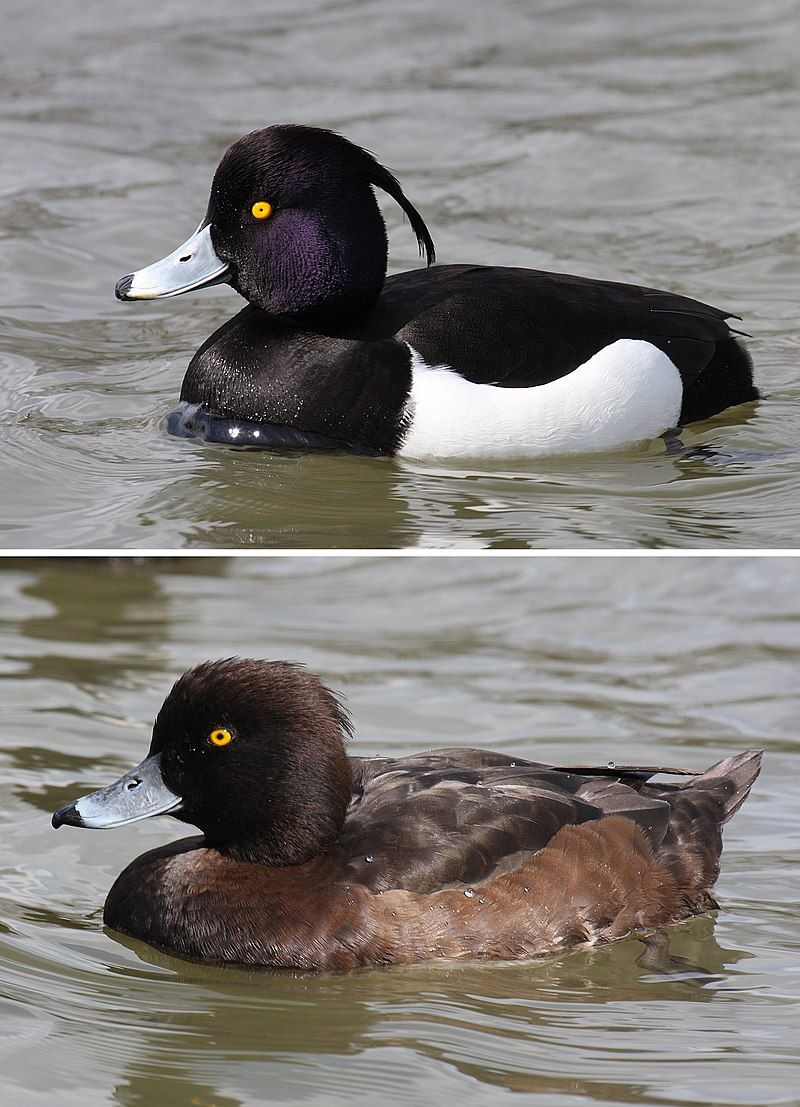
The Tufted Duck, also known as the Tufted Pochard, is a species of small diving duck that is found primarily in northern Eurasia. It is one of the most populous species of duck, with a population of almost one million birds.
The scientific name of this species comes from two words of Ancient Greek and Latin origins.
The Greek word ‘aithuia’ was used by authors such as Hesychius and Aristotle to refer to a seabird of unknown species, while the Latin word ‘fuligo’ means ‘soot’, and ‘gula’ means ‘throat’.
The tufted duck is a beautiful bird, with its black head and neck, white cheeks, chestnut brown body, and black and white wings. It has a unique tuft of feathers on its head, which is where it gets its name.
The tufted duck is an excellent swimmer, feeding on aquatic plants, insects, and mollusks. It is a migratory species, travelling between its breeding grounds in the northern parts of Eurasia and its wintering grounds in the south.
It can often be seen in large flocks on wetlands, lakes, reservoirs, and slow-flowing rivers.
| Kingdom | Animalia |
| Phylum | Chordata |
| Class | Aves |
| Order | Anseriformes |
| Family | Anatidae |
| Genus | Aythya |
| Species | A. fuligula |
13. Northern Pintail
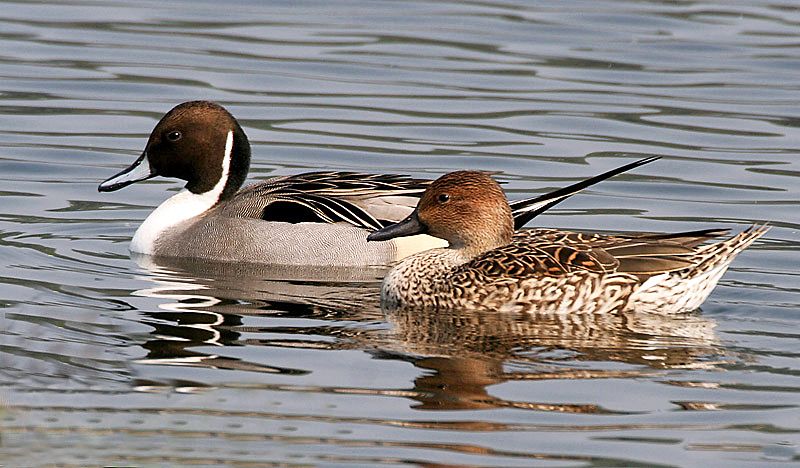
The pintail, also known as the northern pintail, is a species of duck that can be found in many parts of the world. Its range spans from northern Europe across the Palearctic region and into North America.
As a migratory species, the pintail travels south during winter, often reaching as far as the equator. The pintail is a medium-sized duck, with males typically ranging from 17 to 22 inches in length and weighing around a pound.
They sport a long, pointed tail, which gives the species its name, and have a mainly brown appearance. Their underparts are a lighter color, often white or tan, and they have a distinctive dark stripe that runs along the side of the neck.
During the summer months, when they are breeding, the pintail can be found in wetlands and marshes throughout their range. They feed on aquatic plants, insects, and other small creatures found in the water.
During the winter months, they tend to be found in more open areas, such as fields and pastures, where they can feed on grain and other plant material.
The pintail is an important species for conservation efforts, as their population is decreasing due to hunting, habitat loss, and other human activities. Efforts are underway to protect their habitats and ensure that they can continue to thrive in the wild.
| Kingdom | Animalia |
| Phylum | Chordata |
| Class | Aves |
| Order | Anseriformes |
| Family | Anatidae |
| Genus | Anas |
| Species | A. acuta |
14. Black Stork
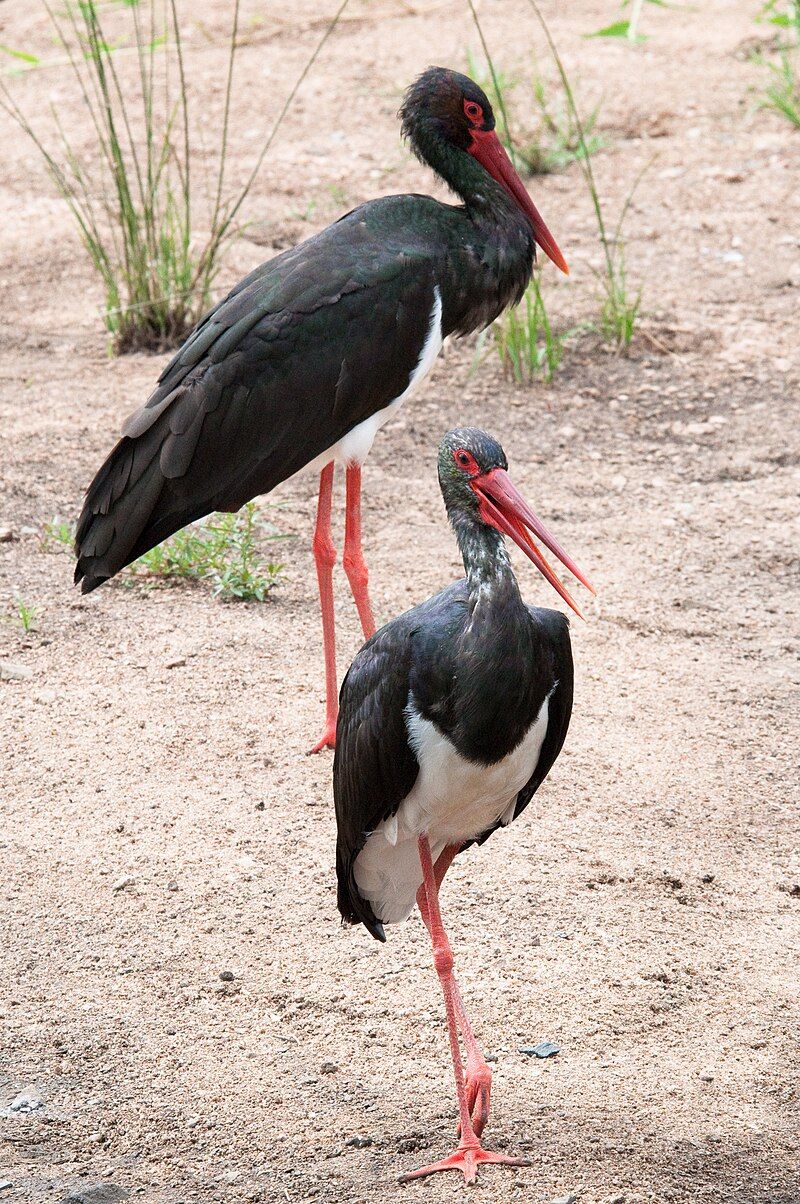
The black stork (Ciconiidae) is a large species of bird belonging to the stork family. It was first described by the renowned 18th-century Swedish naturalist, Carl Linnaeus, in the 10th edition of his Systema Naturae.
This treatise provided a comprehensive description of the natural world and the species it contains. The black stork is a large bird, usually measuring up to 90 cm in length and weighing up to 2.3 kg.
They have a black or dark grey plumage with a white underside, as well as a long, curved, dark-coloured bill. The long legs are usually a pinkish-red colour.
Black storks are found in wetlands and marshes across Europe, Asia and Africa, and are renowned for their long-distance migrations. They are mostly solitary creatures, though they can sometimes be found in small flocks during the winter season.
Black storks feed on small animals such as amphibians, fish, and insects, as well as carrion. They nest in trees or large bushes and, typically, have 2-4 eggs. Overall, the black stork is an iconic species of bird that has been studied and described by scientists for centuries.
| Kingdom | Animalia |
| Phylum | Chordata |
| Class | Aves |
| Order | Ciconiiformes |
| Family | Ciconiidae |
| Genus | Ciconia |
| Species | C. nigra |
15. Ruddy Shelduck
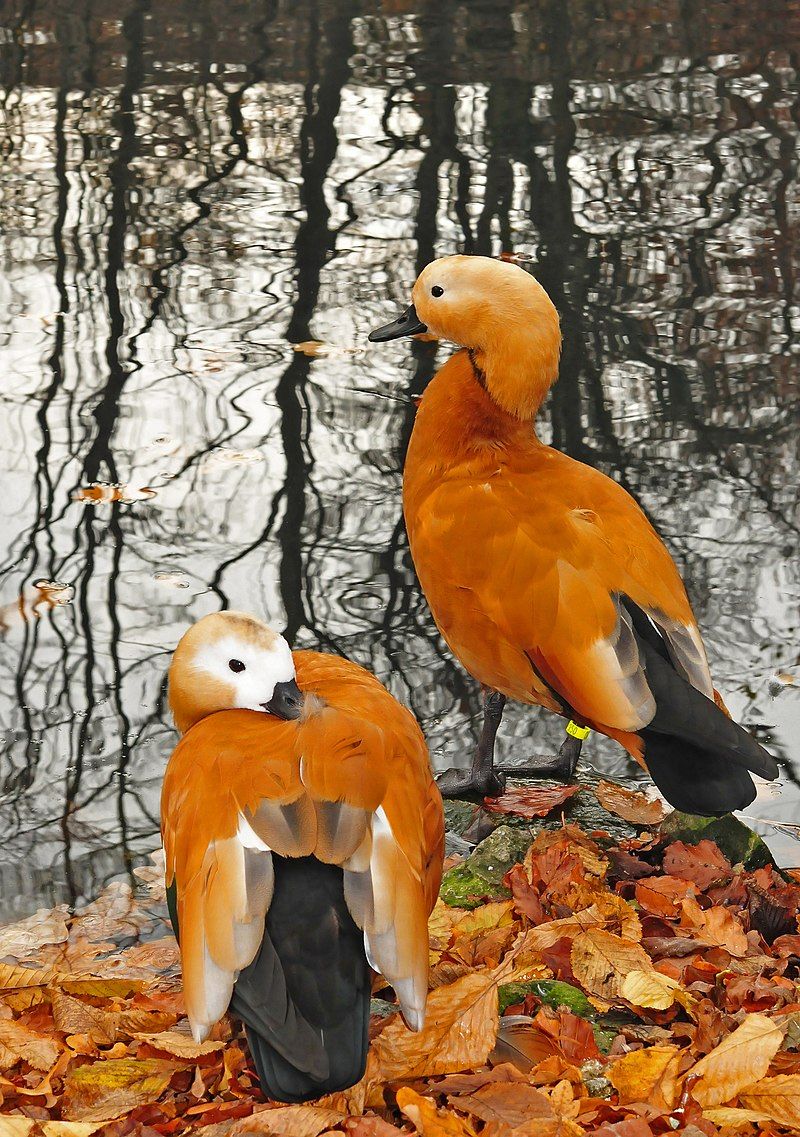
The ruddy shelduck, also known as the Brahminy duck, is a large waterfowl of the family Anatidae. This unique bird has a length of 58-70 cm, with a wingspan of 110-135 cm. It is recognized by its reddish-brown plumage and long tail feathers.
The ruddy shelduck is found in the subcontinent of India, although it has also been spotted in some parts of Europe and Asia. The ruddy shelduck is a monogamous species that prefers to live near water.
It is usually found in pairs or small groups and spends much of its time foraging in shallow waters. They feed mostly on aquatic plants, insects, mollusks, and crustaceans. The ruddy shelduck is a strong flier and can often be seen soaring over its territory.
It is a vocal bird, producing a variety of calls and whistles. During the breeding season, when the males are displaying to the females, they are particularly vocal. The ruddy shelduck is an important species in Indian culture and is often depicted in art and literature.
It is known for its strong pair bonds and is often seen in pairs or small groups. It is an important part of the ecosystem, providing food and protection for its environment.
| Kingdom | Animalia |
| Phylum | Chordata |
| Class | Aves |
| Order | Anseriformes |
| Family | Anatidae |
| Genus | Tadorna |
| Species | T. ferruginea |
16. Barnacle Goose
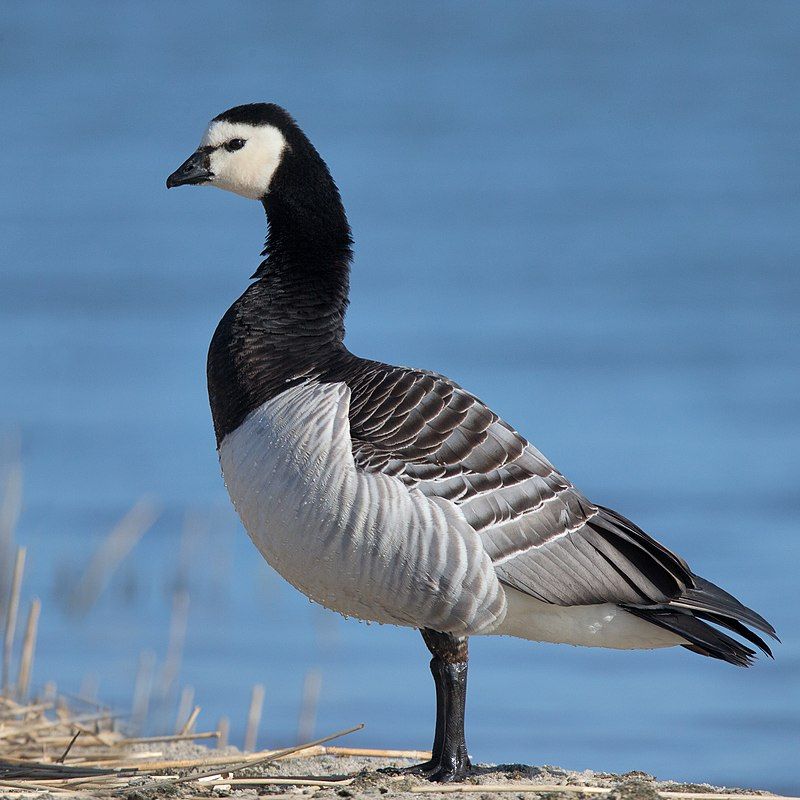
The barnacle goose is an interesting species of goose that belongs to the Branta genus, which consists of species with mainly dark feathers. This distinguishes them from the grey Anser species, which are characterized by their grey plumage.
Barnacle geese are typically found in the Arctic regions of Europe and Asia, but have been known to migrate south in the winter months. They feed mainly on grasses, roots, seeds, and occasionally other small invertebrates.
Barnacle geese can be identified by their black heads, necks, and backs, with white patches on their chests. They have short, pinkish bills and pink legs and feet. The male barnacle goose is larger than the female and has a more brightly coloured head.
While the female has a more mottled, brownish appearance. The barnacle goose is an important species in many areas and is often hunted for its meat. Conservation efforts have been put in place to protect this species from becoming endangered.
| Kingdom | Animalia |
| Phylum | Chordata |
| Class | Aves |
| Order | Anseriformes |
| Family | Anatidae |
| Genus | Branta |
| Species | B. leucopsis |
17. Common Shelduck
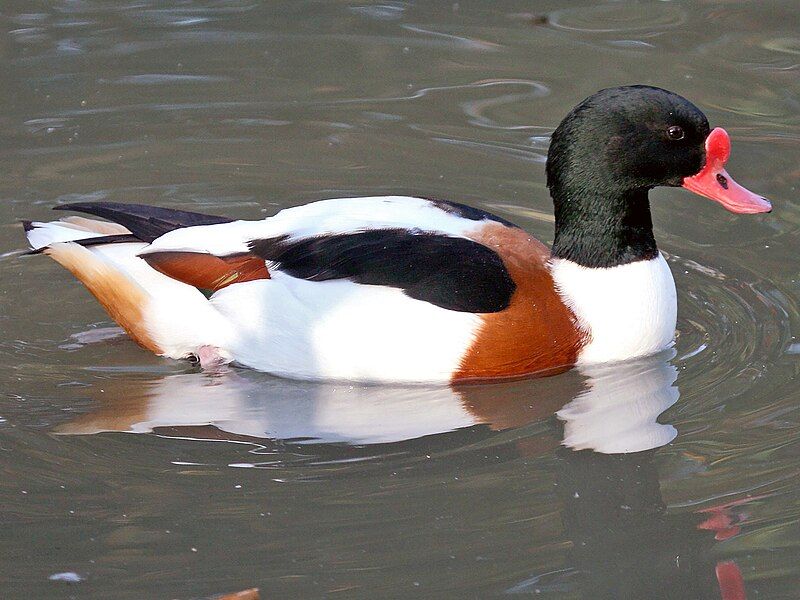
The common shelduck is a species of waterfowl that belongs to the genus Tadorna. It is found in a wide variety of habitats in the Euro-Siberian region of the Palearctic, from temperate regions to subtropical ones.
During the breeding season, it prefers temperate climates, while in the winter months it can also be found in the Maghreb, which is a region in North Africa. It is quite a widespread species and is quite commonly seen in many parts of the Euro-Siberian region.
Its preferred habitat is mainly wetland areas, such as lakes, rivers, marshes, and coastal regions. They are also known to inhabit agricultural land, such as fields and pastures.
Common shelduck typically feed on aquatic plants, insects, molluscs, crustaceans, worms, and small fish. They often feed by dabbling in shallow water, or by upending while swimming.
They tend to form large flocks during the winter months and sometimes gather in very large numbers. The common shelduck is an important species for conservation, as it provides a valuable source of food for many species of birds, mammals, reptiles, and amphibians.
It is also a popular game bird and is hunted in some areas.
| Kingdom | Animalia |
| Phylum | Chordata |
| Class | Aves |
| Order | Anseriformes |
| Family | Anatidae |
| Genus | Tadorna |
| Species | T. tadorna |
18. Eurasian Wigeon
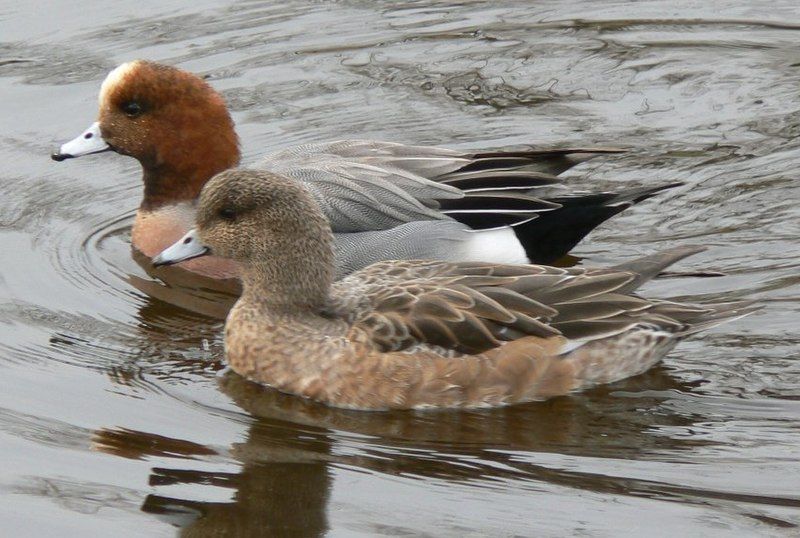
The Eurasian wigeon, also known as the European wigeon, widgeon, or simply wigeon, is a species of dabbling duck belonging to the genus Mareca. It is a common and widespread bird within its Palearctic range, which stretches across most of Europe, Asia, and parts of North Africa.
The Eurasian wigeon is one of three species of wigeon in the genus Mareca, the other two being the American wigeon and the Chiloé wigeon. The Eurasian wigeon is a medium-sized duck, with males reaching lengths of around 52-58cm, and females around 45-49cm.
They have a distinctive plumage, with a grey head and neck, white eyes, chestnut breast and sides, and white underparts. This species is also easily identified by the white stripe on its forehead, which is wider than that of other wigeon species.
The Eurasian wigeon is a highly sociable species, often found in large flocks in suitable wetland habitats. These flocks are made up of both males and females, and the birds feed mainly on aquatic vegetation.
This species is an important food source for many predators, including foxes, owls, and other birds of prey. The Eurasian wigeon’s call is a loud, whistling “whee-oo”, which is often heard in wetland habitats.
The Eurasian wigeon is a widespread bird, but its population is thought to be declining as a result of habitat loss and degradation.
To help protect this species, conservation efforts are needed to ensure that suitable wetland habitats are preserved and managed in order to provide suitable food and shelter for these birds.
| Kingdom | Animalia |
| Phylum | Chordata |
| Class | Aves |
| Order | Anseriformes |
| Family | Anatidae |
| Genus | Mareca |
| Species | M. penelope |
19. Ferruginous Duck
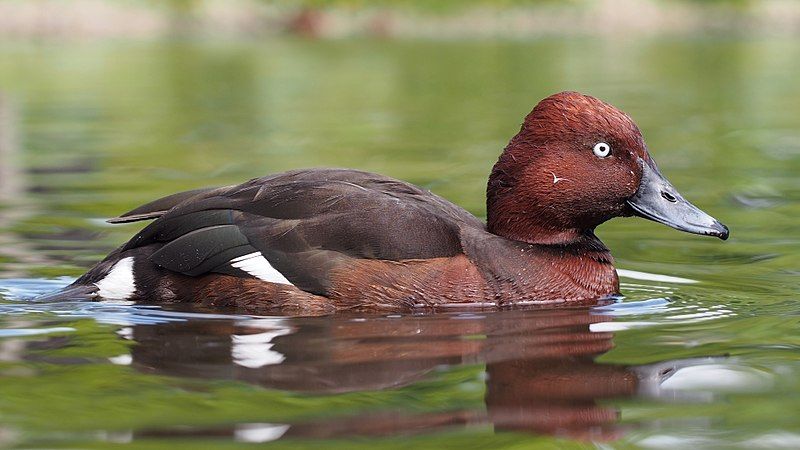
The Ferruginous Duck, also known as the Ferruginous Pochard, Common White-Eye or White-Eyed Pochard, is a unique medium-sized diving duck that is found in the Eurosiberia region.
Its scientific name, Aythya nyroca, is derived from the Greek language, specifically aithuia, an unidentified seabird mentioned in a variety of ancient texts such as those written by Hesychius and Aristotle, and nyrok, which is the Russian word for duck.
This species is considered to be special due to its size and its unique coloring, which is notably different from other ducks in the same family. The Ferruginous Duck is known for its rusty-brown plumage, which is a unique color for a duck, and its bright white eyes.
This species is also characterized by its long bill, which is helpful when it comes to diving for food. This species is also known to be very social and can be found in small flocks during the winter months.
All in all, the Ferruginous Duck is a unique species that is an interesting addition to the Eurosiberian region.
| Kingdom | Animalia |
| Phylum | Chordata |
| Class | Aves |
| Order | Anseriformes |
| Family | Anatidae |
| Genus | Aythya |
| Species | A. nyroca |
20. Gadwall
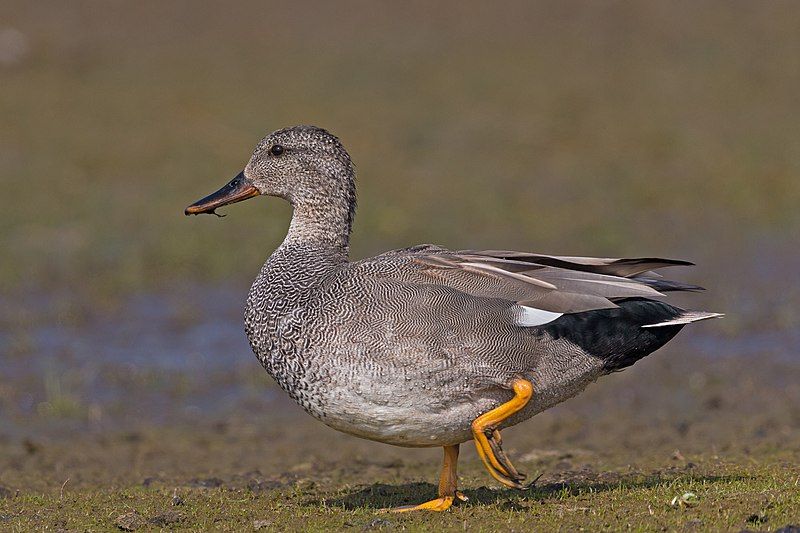
The gadwall is a species of dabbling duck belonging to the family Anatidae. It is large and unmistakable, with its grey and white plumage, bright yellow bill and contrasting black tail. It is commonly found in wetlands, shallow bodies of water, and grassy areas.
It is known to inhabit ponds, lakes, rivers, marshes, and estuaries. The gadwall is a strong swimmer and can dive for food in the water. The gadwall is widespread across the Northern Hemisphere.
Its range extends from the Arctic Ocean through much of Europe, Asia, and North America. It is especially common in North America, where it is found in every state except Hawaii.
It is also known to migrate southwards in the winter months. The gadwall is omnivorous, feeding mainly on seeds, aquatic plants, insects, and small fish.
It can be seen dabbling in the water, upending to forage for food, or grazing on land. The gadwall is a gregarious bird, often seen in flocks of up to several hundred individuals. It breeds in the spring and summer months, with pairs forming monogamous bonds.
The female lays up to nine eggs in a nest on the ground or in a hollow tree. The eggs hatch after 24-26 days, with the chicks leaving the nest shortly afterwards. The gadwall is a common and widespread species, and its population is believed to be stable.
It is listed as of least concern by the International Union for Conservation of Nature.
| Kingdom | Animalia |
| Phylum | Chordata |
| Class | Aves |
| Order | Anseriformes |
| Family | Anatidae |
| Genus | Mareca |
| Species | M. strepera |
21. Garganey
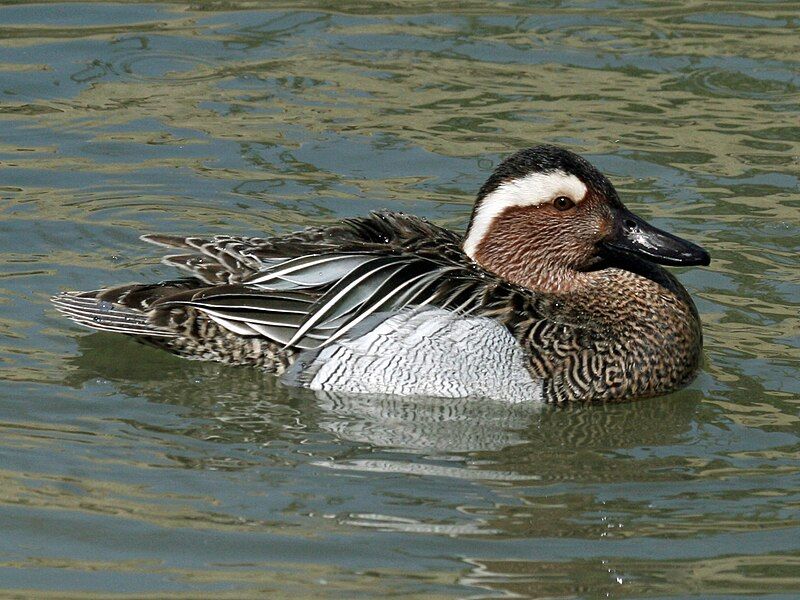
The garganey is a small, dabbling duck that is found in many parts of Europe, the Palearctic, and beyond. It is a migratory species, with the entire population undertaking a long journey to winter in southern Africa, India, Bangladesh, and Australasia.
During this winter season, large flocks of garganeys can be seen in these warmer climates. The garganey is an important species for these areas, as it provides an important source of food for native species.
During the spring and summer months, the garganey can be seen in its breeding grounds across Europe and the Palearctic. It is an important species for its habitat, providing food and nesting areas for other species.
| Kingdom | Animalia |
| Phylum | Chordata |
| Class | Aves |
| Order | Anseriformes |
| Family | Anatidae |
| Genus | Spatula |
| Species | S. querquedula |
22. Greater Scaup
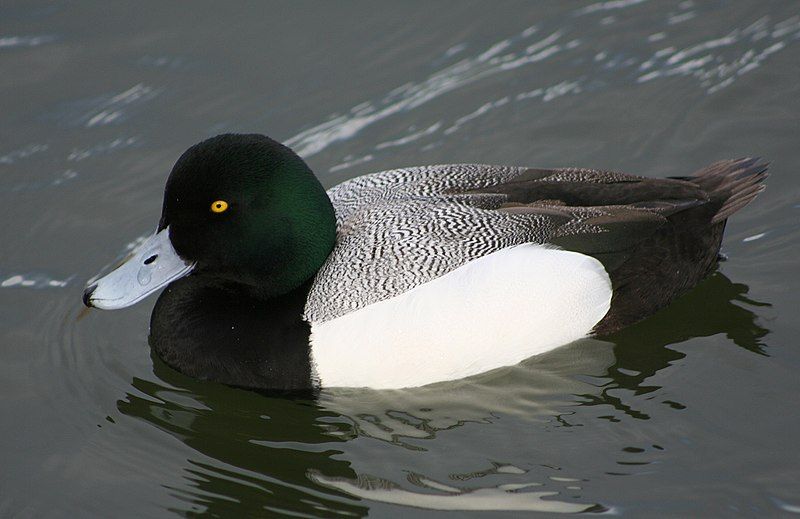
The greater scaup is a species of diving duck that is found across much of the northern hemisphere. It is also known as ‘bluebill’ in North America and ‘just scaup’ in Europe.
It is a mid-sized duck, larger than its closely related cousin, the lesser scaup. The greater scaup breeds primarily in the summer months in locations such as Alaska, northern Canada, Siberia, and the northernmost parts of Europe.
These are some of the most northern regions of the world, and the duck takes advantage of the ample food sources available in these areas.
It also uses the cold temperatures of these locations to its advantage, as it helps keep the predators at bay. The greater scaup is an important species to the ecosystems of these areas as it helps to keep the population of aquatic invertebrates in check.
It will also feed on various fish species, along with insects, crustaceans, and mollusks.
They are also an important food source for a variety of other animals, such as eagles, hawks, and foxes. The greater scaup is a species that plays an important role in the northern ecosystems.
It is essential for the balance of the food chain and helps to keep the populations of its prey in check. While it is also an important source of food for predators, its presence helps to keep the populations of aquatic invertebrates in check.
| Kingdom | Animalia |
| Phylum | Chordata |
| Class | Aves |
| Order | Anseriformes |
| Family | Anatidae |
| Genus | Aythya |
| Species | A. marila |
23. Greater White-Fronted Goose
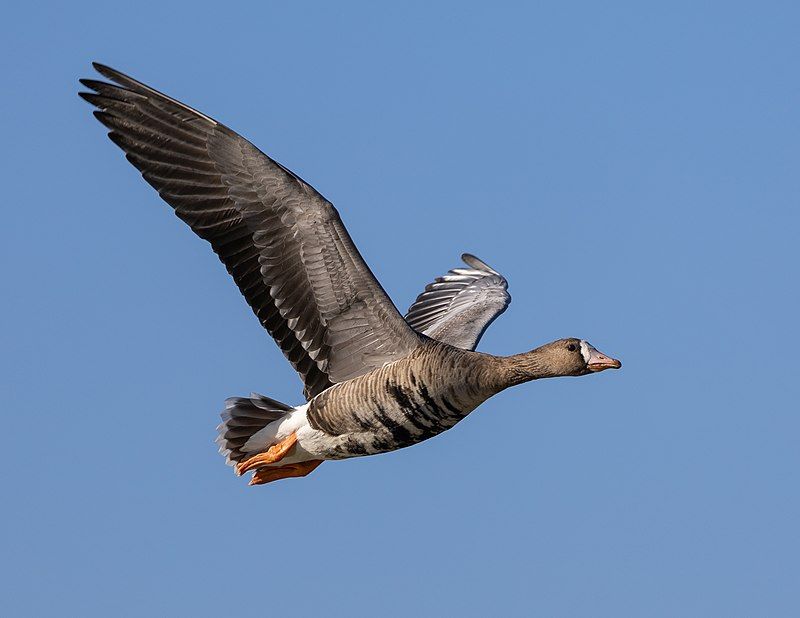
The greater white-fronted goose is a species of goose that is closely related to the lesser white-fronted goose. It is named for the white feathers that are found around the base of its bill.
The scientific name for this bird is albifrons which is derived from the Latin words albus meaning “white” and frons meaning “forehead”. This bird is found in many parts of the world, including Europe, Asia, and North America.
It is an omnivorous bird, feeding on a variety of plants, insects, and small animals. The greater white-fronted goose is a migratory species, breeding in the far north and overwintering further south.
They form large flocks and often congregate in wetlands or on coastal mudflats. The population of this species is currently stable, however, it is still threatened by hunting and habitat loss.
Conservation efforts have been put in place to ensure the long-term survival of this species.
| Kingdom | Animalia |
| Phylum | Chordata |
| Class | Aves |
| Order | Anseriformes |
| Family | Anatidae |
| Genus | Anser |
| Species | A. albifrons |
24. Lesser White-Fronted Goose
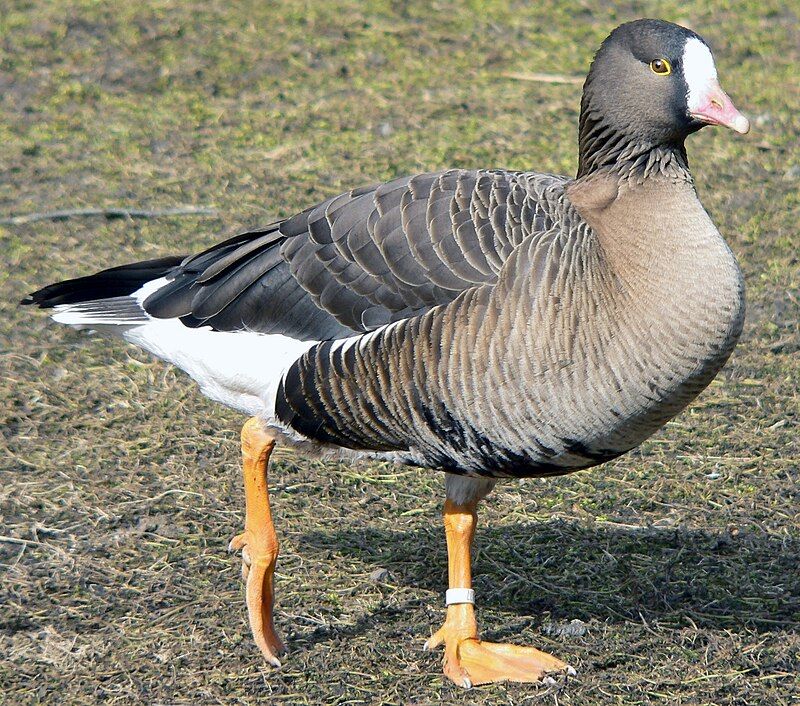
The lesser white-fronted goose is a species of goose that is closely related to the larger white-fronted goose. This species breeds in the northernmost parts of the Palearctic, an area that encompasses most of Europe, as well as parts of Asia and North Africa.
Although it is common in much of its range, the lesser white-fronted goose is a scarce breeder in Europe. However, there has been an attempt to reintroduce the species into Fennoscandia, a region that includes Norway, Sweden, Finland, and parts of Russia.
The goal of this reintroduction program is to increase the population of the lesser white-fronted goose in Europe. Conservationists hope that by providing suitable habitat and increasing the population of this species, they can help to ensure its ongoing presence in the region.
| Kingdom | Animalia |
| Phylum | Chordata |
| Class | Aves |
| Order | Anseriformes |
| Family | Anatidae |
| Genus | Anser |
| Species | A. erythropus |
Conclusion
Birds in Hesse are a vital part of the state’s ecology and provide an essential food source for many species. They play an important role in maintaining the biodiversity of the region and are a beautiful and unique part of nature.
Conservation of these species is important to ensure that they remain a part of the Hesse ecosystem.